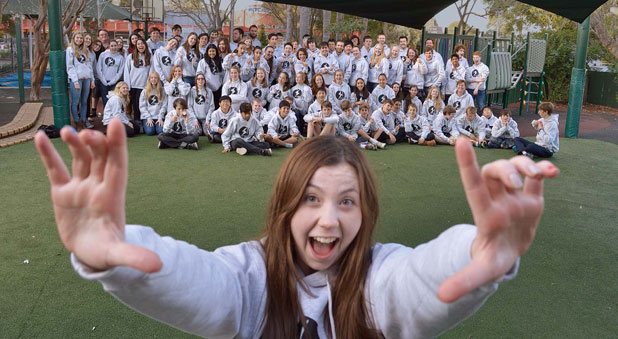St John’s, North Ryde is trying to find new ways to fulfil the Diocesan Mission, encouraging young people to stick around in our churches by getting more hands-on with ministry.
For the past nine years, St John’s has operated a kids’ program with a twist – high schoolers participate as leaders and as “campers” in two different components of the same program.
“I’ve been involved with beach missions and things in the past,” says the rector of St John’s, the Rev John Chappell, “and you reflect on the fact that they’re great opportunities to do evangelism, kids’ ministry and things like that, but often the long-term payoff is teens and young people having an extended opportunity to switch on to ministry. “There are a lot of things we saw in that model that we thought would translate and serve well in our local context.”
The five-day program sees 170 kids come along, assisted by a large group of 90 leaders, including many high schoolers. Mr Chappell says the program began with much smaller numbers nine years ago, but has slowly grown as it has gained traction in the local area and former attendees have transitioned to become leaders themselves.
“Parts of the program grew out of another program called Kids’ Games, which we ran at my previous church,” Mr Chappell says. “When we started here it was very much a provisional parish, there were only a few families, and we had maybe 15 leaders and 25 kids turn up to the first program. Since then it has grown each year to its current size. “It is possible to take this idea and scale it down, then just add elements as the program grows.”
While high schoolers help lead the primary school-aged children during the morning, they are treated to teaching and activities later in the afternoon that are especially for them. Mr Chappell says many of the mentoring and training elements have grown out of work done by Peter Mayrick at Moore College’s Centre for Ministry Development. “The leaders have a longer Bible talk together, they have discussion around that talk, some feedback or mentoring, some free time as well, and then head home at 4pm,” Mr Chappell says. “The beauty of it is that we can get the good stuff out of beach missions but without it being in a residential mode. Plus parents love it because their teenage kids get home in the afternoon and zonk out, and then get up early the next day raring to go.”
While the logistics of running a two-tiered program might seem intimidating, Mr Chappell says the church has worked around the burden particularly through the use of money raised from children enrolling in the program, which is then used to pay for afternoon soccer clinics and other professionally operated activities. “A lot of churches attach a negligible cost to their programs on the assumption that will attract more people,” Mr Chappell says. “We charge the first child $120 for the week. Part of that is they get a cap and T-shirt, but that money also helps us pay for professional external coaches. That not only adds value to the program but logistically it frees us up to run the other program for the teen leaders.”
The program has Mission 2020 firmly in its sights. Currently only 65 per cent of young people remain in the church when they reach adulthood, but Mr Chappell wants Sydney churches to far surpass the Mission target of 70 per cent.
“The retention stat in our churches, I think, is a real problem,” he says. “We, as churches, really need to stop and have a hard look at why that is. What I think we need to be doing is recognise that teens are not a waste of space. They have enormous potential to offer things, but we have to actually make space and give them something to own and step up to the plate on. And they are capable of doing that, if we’re prepared to think out a structure that works.“























